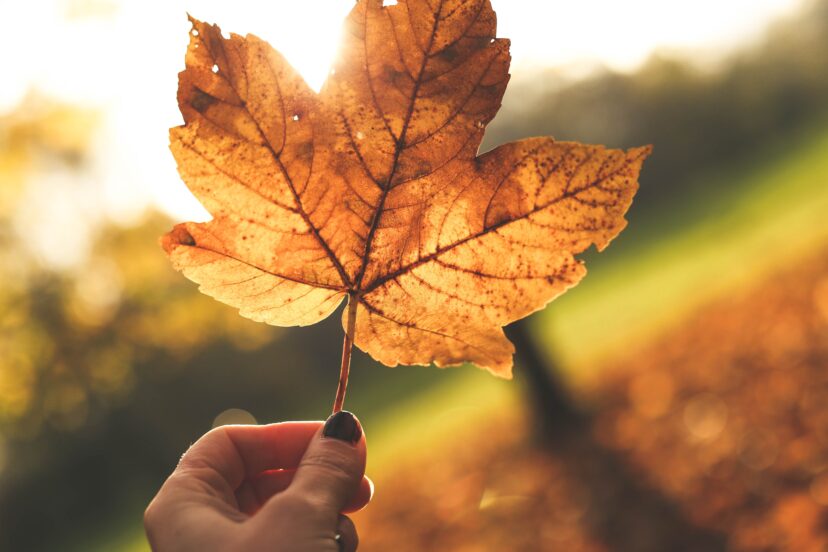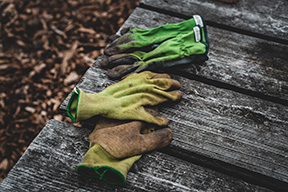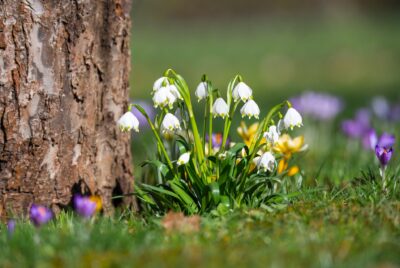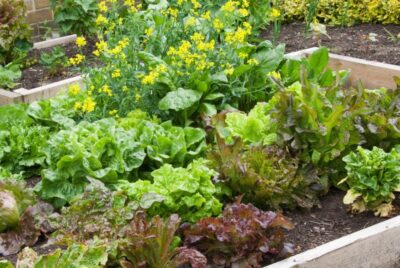11 Fall Garden Prep Ideas for Spring Blooms
Fall, often seen as a season of transition with the colder months, is an opportunity for gardeners to set the stage for a remarkable spring garden. Within our fall garden prep guide, there are several gardening tasks one can do whether you have vertical or traditional gardens or a combo of the two.
In this article
- When to Start your Fall Garden Prep
- Get your Garden Tools Handy
- Assess your Garden’s Needs
- Remove Spent Annuals
- Prune and divide Perennials
- Clean out Garden Beds
- Inspect for Pests and Diseases
- Test, Nourish and Water the Soil
- Plant Spring-blooming Bulbs
- Plant Shrubs and Trees
- Protect Delicate Plants
- Clean and Sterilize Tools
- Structure Repairs
When to Start your Fall Garden Prep
Fall garden prep isn’t a last-minute affair. It requires planning and timing. You should ideally begin in late summer to early fall, or as a general rule-of-thumb about 6-8 weeks before your region’s first frost date. As temperatures start to cool down, plants naturally slow their growth, and this is the perfect time for fall garden prep that will pave the way for a successful spring garden.
Get your Garden Tools Handy
Before we embark on our fall garden prep journey, let’s talk about safety first. Safety goggles, thick gloves, and hearing protection (if you use power tools) are a must! These should be out and ready to put on before any gardening begins.
Garden tools are an extension of your hand and can make your job easier and more efficient. It’s easy to go overboard when purchasing garden tools and they can take up a lot of space so here are a few essential tools to help with your fall garden prep.
- Garden shears: Trim back plants and shrubs—promoting healthier growth. Make sure they are clean and sharp, so they don’t damage the plant.
- Garden fork: Ideal for turning soil and incorporating compost, it’s your garden’s best friend.
- Hand trowel: Useful to dig up dead annuals and to plant bulbs for spring blooms.
- Leaf rake: Perfect for collecting fallen leaves for mulching or composting.
- Bulb planter: Handy for precise bulb placement during planting, ensuring a spectacular spring bloom.
- Garden gloves: Protection from bacteria, fungi, and pest bites that can cause serious harm. Gloves also reduce callouses and protect your skin from thorns, skin scrapes, pesticides, and other chemicals.
- Yard waste bags: For collecting organic debris around the garden including mowed grass, clippings, and dead leaves.
- Wheelbarrow: Takes the hassle out of hauling heavy loads of leaves, plant clipping and mulch.
Now that we’re armed with the right tools let’s dive into the heart of our fall garden prep.
1. Assess Your Garden’s Needs
Take some time to walk through your garden and assess its performance during the summer.
- Make a list of what items need to be finished before the first frost
- Identify which plants thrived and which struggled during the warmer weather
- Think about what areas need additional plants, color, or interest
- Which plants need to move to a better spot
- Don’t forget about companion planting and its benefits
- Write down your thoughts and take pictures for your garden journal for easy future reference
- Use this information to improve your garden for spring and in the seasons to come
2. Remove Spent Annuals
Annual plants that have completed their lifecycle should be removed. Pull out annuals that have finished blooming or have yellow or browning leaves like petunias or marigolds. This clears space for new plantings in the spring. Compost the spent plants or dispose of them if they show signs of disease.
Consider replacing your annuals with fall-appropriate plants like pansies, mums, cabbages, and verbena. These fall bloomers add color to your garden and thrive in cooler temperatures.
3. Prune and Divide Perennial
Fall is the perfect time to trim back your perennial plants and give them some TLC. Pruning back dead or overgrown growth rejuvenates the plants and encourages vigorous spring growth. Additionally, dividing perennials that have grown too large revitalizes them and creates new plants.
Using your garden pruners, trim back dead or overgrown branches of perennials like coneflowers and asters. Hosta plants can be dug up and divided into smaller sections. Replant in different areas of your garden or share with your neighbors.
4. Clean out Garden Beds
A tidy garden is essential for plant health and is visually appealing. Remove any debris, dead leaves, or weeds. Use a leaf rake to gather fallen leaves and twigs from your garden beds. This prevents pests from finding winter refuge in the garden.
Again, compost the debris or dispose of if they show signs of disease.
5. Inspect for Pests and Diseases
Not just for fall, but regularly inspect your plants for any signs of disease or infestations. Early detection can prevent issues from worsening. If you notice yellowing leaves or powdery mildew on your plants, act immediately. Prune affected areas and dispose of them to prevent the spread of disease – diseased plants should not be composted!
6. Test, Nourish and Water the Soil
Healthy soil is the cornerstone of a thriving garden. Conduct a soil test to determine its pH and nutrient levels. You can purchase a soil test kit from your local garden center, and they can help you with making informed decisions once you have results.
A simple way to nourish your soil is by adding a layer of nutrient-rich organic material to your garden beds such as compost, manure, or chopped up leaves. Don’t forget to turn the soil so its mixed and ready to go after the spring thaw.
Don’t neglect your garden’s hydration needs in the fall. Give it a good soak if rainfall is scarce to ensure moisture reaches the roots.
7. Plant Spring-blooming Bulbs
Planting spring-blooming bulbs like tulips, daffodils, hyacinths, and crocuses now ensures a spectacular show when spring arrives. Use a bulb planter to dig holes to the appropriate depth for each type of bulb. Plant in clusters or rows for maximum impact.
8. Planting Shrubs and Trees
Fall is an excellent time to plant new trees and shrubs. The cooler temperatures reduce stress on newly planted specimens yet still warm enough for roots to establish. Choose native trees or shrubs that are well-suited to your region. Dig a hole twice as wide as the root ball and amend the soil with organic matter.
9. Protect Delicate Plants
If you have delicate or marginally hardy plants, provide them with winter protection to ensure survival and health. Wrap burlap or frost blankets around vulnerable plants to shield them from cold winds and frost.
10. Clean and Sterilize Tools
Once finished with your fall gardening tasks, it’s important to clean and sterilize your tools and equipment to avoid spreading pests or disease. Tools should also be sharpened and oiled if needed.
11. Structure Repairs
Your structures are an important part of your gardens, whether its pots, hanging baskets, a trellis or raised garden beds. It’s always a good idea to inspect them each fall and to keep ahead of any repairs.
- Check for cracks, damaged pots or baskets, loose boards or signs of rot and replace if needed
- Hammer in loose nails or even replace with wood screws
- Reinforce a raised garden bed’s corners to prevent splitting away from other boards
- Fix or replace broken or damaged edging along your garden (install to help contain unruly grass)
- Check for sturdiness on trellises and arbors – reinforce where needed
- Garden pots and containers should be cleaned, sanitized, and stored in a dry place
Final Thoughts
Preparing your garden for fall is not just a task, it sets the stage for a beautiful spring garden. By following the above tips and dedicating some time to fall garden prep, you play a vital role in ensuring your plants thrive and your garden flourishes. So, roll up your sleeves, embrace the crisp fall air, and get your hands dirty – your spring self will thank you!,
FAQs
Q: When is the best time to start fall garden preparation?
The ideal time to begin fall garden preparation is in late summer to early fall, or about 6-8 weeks before your region’s first frost date. Plants naturally slow their growth as temperatures start to cool down.
Q: Can I use any type of mulch for my garden beds?
You can use various types of mulch, including shredded leaves, straw, or wood chips, depending on your garden’s needs and your aesthetic preferences.
Q: How do I know if my plants are affected by disease or pests?
Look for signs such as yellowing leaves, unusual spots, or wilting. Regularly inspect your plants, and if you notice any issues, act promptly.
Q: Is fall a good time to plant trees and shrubs?
Yes, fall is an excellent time to plant trees and shrubs. The cooler temperatures reduce stress on newly planted specimens.
Q: What should I do with my garden notes and plans for next year?
Keep your notes and plans in a dedicated garden journal. Review them before the next gardening season to make informed decisions and improvements.






